We recently came across a new (to us) area to enjoy a walk. The Occoquan Bay National Wildlife Reserve is 20 miles away, about 40 to 45 minutes by car. We are fortunate that we can reach many of the areas we enjoy in the same amount of driving time, less sometimes.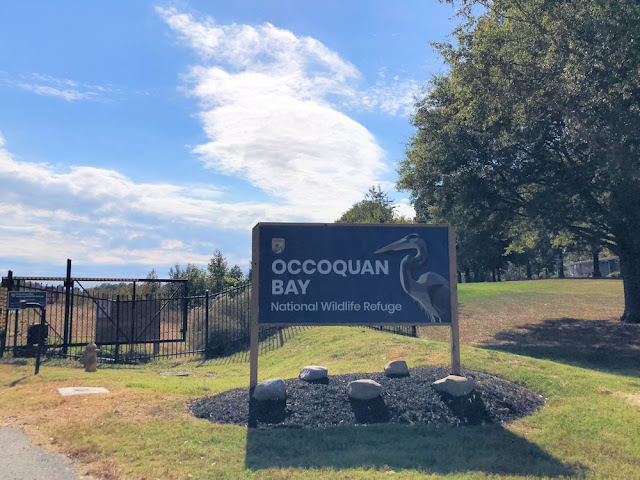
Wednesday, October 27, 2021
OCCOQUAN BAY NATIONAL WILDLIFE RESERVE - FRIDAY - 10-22-21 - PART 1
We had quite a long walk, almost 4 miles, which I have marked in yellow on the map above. For us this is a long walk and I would be hard pressed to walk any further at this stage. We do intend to go back and walk some of the other trails. There is also a two-mile route that you can take by car.
By the time we saw the bench at the end of this path, it was calling to us like a siren song. Benches have that effect, especially on me. I am always grateful for them during our walks. There were several along the way that we made use of. With this being a week day I suppose, the place was very quiet. We came across a handful of walkers, two couples and one lady. All were very friendly. One couple said, "Did you see that?" We hadn't but the lady told us that a deer had jumped out of the undergrowth and ran across the path directly in front of them. You could tell it had made their day and I was happy for their excitement.
We came across all this deep red foliage and Gregg asked me what it was. I told him I thought it was sumac. To be sure I looked it up on my 'Picture This' plant app and it is indeed sumac, Smooth Sumac to be precise. It had tons of information. Its botanical name is Rhus glabra, and its common names are Scarlet sumac, Vinegar tree, White sumac and Upland sumac. It is native to North America. My app said it is also one of the most powerful anti-inflammatory spices out there and yet its leaves contain chemicals that are harmful to humans when ingested, and can cause skin irritation, such as dermatitis when touched. It also says it is inedible? When planting you are supposed to wear gloves to protect yourself! So I find the connection between 'the anti-inflammatory spice' and 'harmful to humans if ingested' a bit confusing. We would have to ask a medical professional to explain this to us.
As you might guess, birds are attracted to the fruit which ripens in the summer and can still be seen on branches well into the winter, sometimes even until spring. Birds you may see feasting include mockingbirds, veery, blue jays, chickadees, woodpeckers, red-eyed vireo, the hermit thrush, the American goldfinch and the American robin, and more. They also attracts deer and opossums, and fox squirrels and cottontail rabbits like to eat its bark. One last bit of information I read was that the leaves and wood can be used to create black ink. Also Smooth sumac is dioecious and only the female plants produce berries.
The photo above is looking back in the direction we had come from, where the deer had run out in front of those walkers I mentioned. When we started out it was very chilly and I had layered clothing. I put an infinity scarf around my neck and was wearing a light cardigan over a short-sleeved top. I was very comfortable wearing them, but as our walk progressed I didn't need them any more, and wrapped the scarf around my wrist and placed the cardy over my arm.
Near our first rest stop there was a sign. We decided to leave the Painted Turtle Pond until next time, and headed towards Deephole Point Road. We were eager to get to the water.
I didn't see a lot of thistles blooming, but perhaps my attention wasn't on them and I just didn't notice. However, when I came across the one below, I snapped a photo.
There were many other things to take my interest away, and it wasn't until I got home and looked at my photo on the laptop, that I saw the insect below the bloom. A search online revealed that it was an adult Spotted Cucumber Beetle. These are a major pest to farmers. Another common name for this bug is Corn Rootworm. They are native to North America and found throughout the states. More information can be found at this link.
These were a few of the plants I noticed on our walk and I included the sumac in my collage. The other plants I will go into more detail another time.
There's a butterfly in this photo but I will leave its close-ups for Part 2.
Thanks for looking and enjoy your day.
47 comments:
Thank you so for taking the time to leave a comment. I enjoy reading them very much and always try to return a visit. As I do monitor comments it may take a while for them to appear, even quite late depending on what is going on and how much time I am able to spend on the computer.
I appreciate all who look at my blog, but I will not be publishing any businesses. If you are only able to publish anonymously, would you sign your name, and leave an addy so I can return your visit where possible? Thank you!



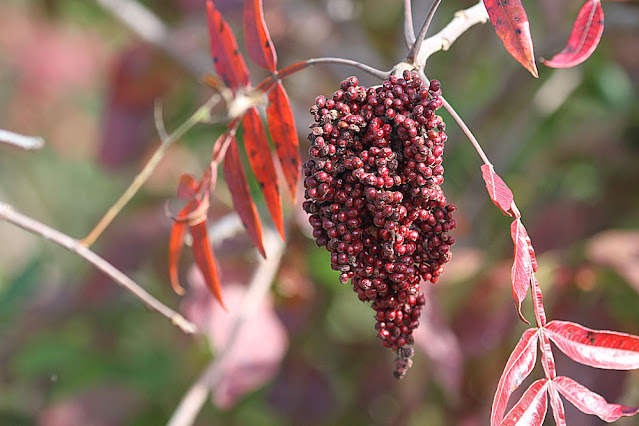
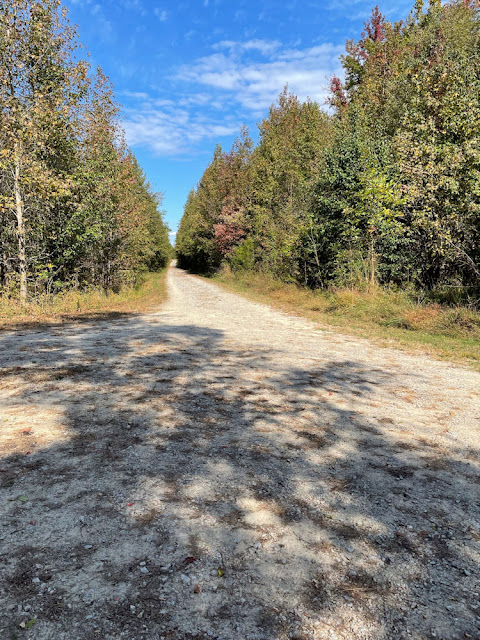

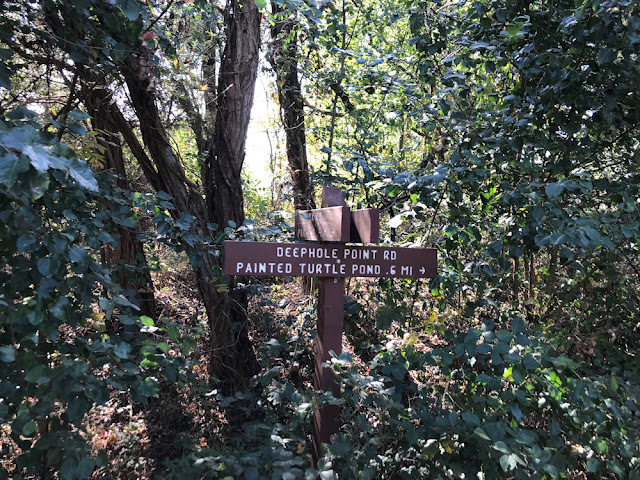
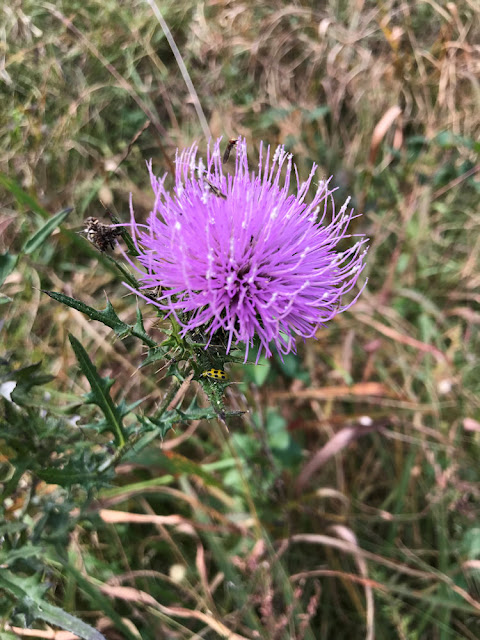
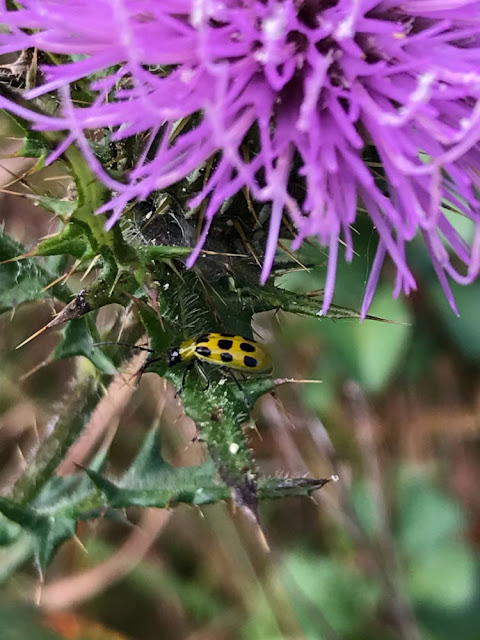



When you said there is a path for cars, this really makes me want to go. I need to see how long it would take to get there. We have these Cucumber Beetles! they are so pretty,but are destructive.
ReplyDeleteThanks Ginny, yes we said we would take the drive next time just to see what it is like. Hopefully they have parking along the way so that we can stop to take photos :) Interesting about your Cucumber Beetles. There is another moth, such a pretty one but the name escapes me now. it is also very harmful to crops.
DeleteWhat a lovely walk, the pathway looks reasonably flat as in not hilly.
ReplyDeleteI wouldn't be able to walk 4 miles all at once these days and would welcome a seat often along the way.
The berries would be enjoyed by the birds.
Thank you Margaret, 4 miles is more than our normal walk also. Those seats are gifts:)
DeleteWhat a beautiful day - for you and Gregg and for us. Thank you.
ReplyDeleteI share your confusion about the sumac.
I am still confused Sue ;) You are very welcome, I'm happy to share always.
DeleteA lovely walk on a sunny day and plants of interesting plants to see. Love the bug
ReplyDeleteThanks Margaret, it truly was wonderful and that little bug was very interesting wasn't it? :)
DeleteIt looks like you had an enjoyable long walk. You saw many unusual plants. A special app to identify them is useful. Being native species they are different and interesting. Thank you for sharing Denise.
ReplyDeleteYou are very welcome Linda, glad you found my post interesting :)
DeleteWhat a beautiful place to walk. I think 4 miles would be a bit too much for me. I would need several benches to stop at along the way.
ReplyDeleteYes, it was not intended Ann, those 4 miles, it just worked out that way. I was very glad to see the car at the end of it :)
DeleteHello Denise,
ReplyDeleteYou found a nice refuge for your walk. It is always great to visit new places. Looks like a beautiful day, lovely variety of photos. The plant app sounds great, I will have to check that out. Take care, have a happy day!
Very fortunate to find out about it. Across the bay is another refuge, one that we went to before and intend to revisit, hopefully soon :) You take care and have a happy day also, and happy Sunday.
DeletePretty new area!! I love open wildlife sanctuaries like this! But, I learned something...sumac & ink?!! Who would have known?
ReplyDeleteThat was new to me also, love finding these things out. Yes, who would have known? :)
DeleteYou had a nice though long walk in the park. You are so lucky to be able to see so many places on the mainland just by getting in the car and driving. I can't do that in Hawaii. LOL.
ReplyDeleteYes we are very lucky, and we try not to take it for granted. Thanks Gigi :)
DeleteWhat a wonderful place to ramble! And that is a nice long walk when you are taking pics and looking around. I love the plants you saw and that cute beetle. AND...I love maps! I always get excited when I see a trail map! I always want to GO! Thanks for taking me along on this trek! Wish I was there!
ReplyDeleteYou are very welcome! I know what you mean about those trail maps Diane :) I love maps of any kind.
Deletewe all love these identify plant apps, i used the one for dogs on Beau.. even in all of spectacular nature we are still learning things we did not know. who knew sumac makes INK.. now we do. sorry you missed the painted turtle pond.. was there a deeop whole in the road? ha ha
ReplyDeleteI didn't know there was an app for dogs Sandra, though not surprised. There seems to be one for everything :) Yes, the painted turtle pond will be next time but I think the turtles will be hibernating soon. No but if there had have been a deep hole you can guess who would have found it ;)
DeleteSão muito importantes estas reservas naturais.
ReplyDeleteUm abraço e continuação de uma boa semana.
Andarilhar
Dedais de Francisco e Idalisa
Livros-Autografados
Eu concordo com você 100 por cento! Muito, muito importante! Obrigada, um abraço e continuou bom final de semana :)
DeleteThe Occoquan Bay Reserve looks like a great area to explore, Denise. Four miles is a long walk and I would be happy to see a bench as well! As pretty as the sumac is some folks are really allergic to it. I've used the dried berries in flower arrangements and it doesn't seem to bother me. My sister always called it poison sumac as it bothered her. I always enjoy seeing your adventures and especially your information.
ReplyDeleteThank you Martha Ellen :) I'm glad you weren't bothered by the berries and sorry your sister is. The symptoms sound very uncomfortable!
DeleteLovely area.
ReplyDeleteThank you Anne :)
DeleteLovely place. I love such walks.
ReplyDeleteThank you Lucyna, yes I love my walks also :)
DeleteBeautiful photos the weather looks great.
ReplyDeleteThank you Christine, it was a perfect day :)
DeleteAs a child I used to be convinced that if I touched sumac berries I'd die. :)
ReplyDeleteLooks like a lovely place for a hike!
Blessings~
That's very interesting, they sound very toxic. Thank you and blessings :)
DeleteThat's a very nice place and you got some great photos. We have sumac over here in Oklahoma as well. I am not sure if is the same exact type as yours.
ReplyDeleteThanks Yogi! Still hoping to get that drone one day :) I read that there are about 14 different types of sumac in the U.S.
DeleteIt looks like you can mine this area many ,many times to find interesting plants and animals.
ReplyDeleteI agree, every time there is something different. Thanks Red :)
DeleteWhat a beautiful part of North america. Lucky for all of us that you enjoy it so much.
ReplyDeleteThank you Cloudia, that's very kind of you. I sure do enjoy it. I look forward to the day we can road trip again.
DeleteThe sumac is quite pretty.
ReplyDeleteI agree William :)
DeleteA wonderful place to walk and what a nice documentation of the plants you see!
ReplyDeleteGlad you enjoyed Ellen, I love finding out and sharing these things :)
DeleteIt certainly looks a good place to enjoy a walk.
ReplyDeleteI enjoyed seeing your photographs.
All the best Jan
Thank you Jan, so glad and all the best to you too :)
DeleteI've often admired the long-lasting red leaves of sumac. I had wondered why people said "poison sumac" because it has not affected me like poison ivy, but now I know to avoid it.
ReplyDelete